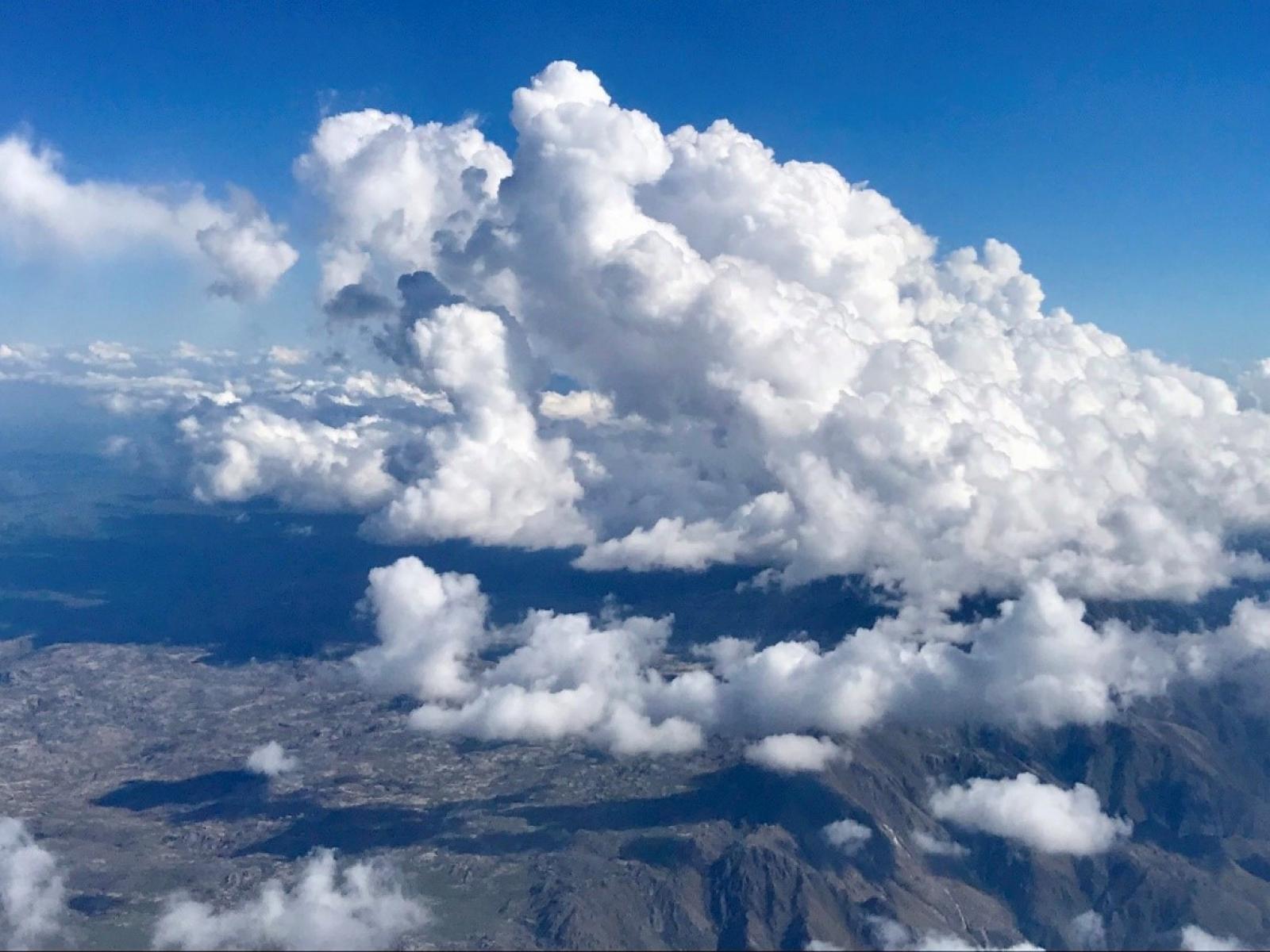Atmospheric Recipes for Making Mountain Thunderstorms
Assessing a complex concert of weather and terrain conditions that affect the growth of cumulus clouds into deep thunderstorms along mountain ranges

Simulations studied processes that cause precipitating deep convective clouds to form (or fail to form) over a mountain in Argentina using field campaign data.
(Photograph by Adam Varble | Pacific Northwest National Laboratory)
The Science
Deep cumulus clouds and thunderstorms often initially develop over mountainous terrain rather than flat terrain because the local temperature and wind conditions promote cloud growth. However, cumulus clouds along mountains do not always grow into thunderstorms, despite seemingly beneficial surrounding weather conditions. Researchers used numerical simulations to determine the reasons why certain weather conditions support terrain-driven cloud growth into deep thunderstorms while others suppress cloud growth. These findings help to improve scientific understanding of the processes that control thunderstorm formation, which is important for weather and climate forecasts.
The Impact
Mountain ranges often promote the growth of cumulus clouds into deep thunderstorms. These storms have a vast influence on meteorology and climate through hydrological, severe weather, and radiation effects. Few studies have examined a large variety of realistic meteorological conditions acting in concert to control cumulus growth over mountain ranges. Using high-resolution numerical models and composite weather balloon observations, researchers rank the importance of different weather conditions that control the formation of mountain thunderstorms. Successful thunderstorm formation was strongly governed by local airflow circulations generated along the terrain by upslope winds and the relative humidity of the overlying air. Taking this information into account may improve forecasts of cloud growth processes in global and regional climate models.
Summary
Past studies have used idealized numerical simulations to test the individual effects of meteorological conditions on terrain-driven cumulus clouds. Those studies typically used an idealized meteorological state rather than real-world conditions. Few studies have tested the complex interactions of a variety of realistic meteorological conditions that act in concert with cloud-scale updrafts to promote or suppress the development of deep convective storms. Researchers employed high-resolution cloud-scale numerical simulations based on near-cloud meteorological conditions observed during two field projects conducted in the complex terrain of central Argentina. Simulated background meteorological conditions typified events where cumulus clouds successfully or unsuccessfully grew into deep precipitating storms. These conditions were modified to isolate the relative effects of wind shear, relative humidity, and mesoscale terrain flow on growing thunderstorms. Storm formation was highly sensitive to the ambient relative humidity within the deepening cloud layer. For instance, it was observed that moister conditions reduced dilution of updraft buoyancy and promoted the vertical growth of deep cumulus. However, cumulus deepening was similarly sensitive to the vertical profile of the horizontal wind for two reasons: i) low-level wind speed and direction affected the depth, strength, and ridgeline-relative location of terrain-induced convergence and ii) wind shear prohibited the deepening of cumulus clouds due to vertical pressure gradients. Strong and deep flow convergence along the mountains allowed relatively narrow low-level updrafts to thrive as they grew into deep thunderstorms. Relatively weak flow convergence requires much wider clouds to produce thunderstorms. This research improves understanding of cumulus growth processes. It emphasizes the importance of better representing mesoscale cloud-triggering mechanisms and improves observing capabilities of near-cloud wind and humidity conditions that are used to initialize weather and climate forecasts.
PNNL Contact
Jerome Fast, Pacific Northwest National Laboratory, jerome.fast@pnnl.gov
Funding
This work was supported by National Science Foundation grants AGS-1661707, AGS-1928666, and AGS-1841674; and by the Department of Energy’s Science Biological and Environmental Research program as part of the Atmospheric System Research program through the Integrated Cloud, Land-surface, and Aerosol System Study scientific focus area.
Published: August 10, 2022
Nelson, T.C., J. Marquis, J. Peters, K. Friedrich. "Environmental controls on deep moist convection initiation occurring during RELAMPAGO-CACTI,” J. Atmos. Sci., 79, 1941 (2022). [DOI 10.1175/JAS-D-21-0226.1.]